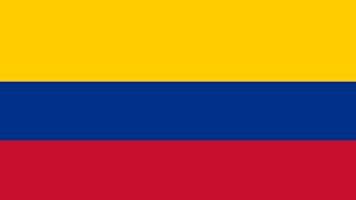At a glance
CDC works with partners in Colombia to build sustainable public health capacity, strengthen laboratory systems and surveillance networks, deliver high-quality HIV diagnostic, treatment, and prevention services, and respond swiftly to disease outbreaks at their source, preventing health threats from reaching the U.S.

Strategic focus
The Venezuelan internal crisis has triggered one of the most significant mass migrations in the history of the Western Hemisphere. The risk of HIV infection among mobile populations is high due to limited access to healthcare services, including HIV testing and treatment, as well as social and economic factors. These structural gaps are intensified by their status as mobile populations, asylum seekers, refugees, or internally displaced persons. Addressing the HIV epidemic among mobile communities in South America requires strategies that consider the unique challenges faced by this population.
In partnership with governments, civil society, and other key stakeholders, CDC prioritizes interventions that directly impact the quality of services for mobile people living with HIV (PLHIV) and people at greater risk of HIV. CDC supports the scale-up of evidence-based programs to bridge service delivery gaps around HIV prevention, active case finding, early antiretroviral therapy (ART) initiation, optimized treatment services, and achievement of viral load suppression with a targeted approach to strengthen systems essential for a sustainable HIV response, while supporting integration of Venezuelan mobile populations with HIV into national health services.
Read more about CDC's most recent key activities and accomplishments below.
Building public health capacity
- Improved access to HIV testing among undiagnosed mobile PLHIV by supporting active case-finding strategies. This included testing as part of outreach strategies for people at greater risk of HIV, index testing services, social network testing, self-testing, and optimized provider-initiated testing.
- Provided expertise to ministries of health to update HIV service manuals, adapt communication materials and job aids to the South American context, train healthcare workers in HIV combination prevention and viral load monitoring, and support integration of Venezuelan mobile populations with HIV into national health services.
HIV prevention and treatment
- Supported a tailored HIV prevention and testing service package for Venezuelan mobile populations in Colombia. This package includes risk-based counseling, HIV testing, and peer navigation for linkage to treatment.
- Contributed to the introduction of pre-exposure prophylaxis (PrEP) for individuals at elevated risk of HIV infection, including the TelePrep telemedicine model.
- Strengthened the direct service provision of a comprehensive treatment package for mobile populations that includes rapid ART initiation, diagnosis, and management of HIV advanced disease and opportunistic infections. This also included tuberculosis, intensified treatment adherence counseling, and follow-up of HIV patients.
- Sustained access to viral load testing among mobile PLHIV, as well as retention and re-engagement of those who are not in treatment or virally suppressed.
By the numbers
HIV
Estimated HIV Prevalence (Ages 15-49)
0.6% (2023)
Estimated HIV Deaths (Age≥15)
Reported Number Receiving Antiretroviral Therapy (Age≥15)
TB
Estimated TB Incidence
46/100,000 (2023)
11% (2023)
TB Treatment Success Rate
74% (2022)